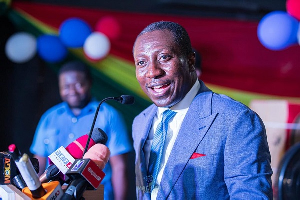Visualize a modern highway active with trade, not just spanning a single nation but stretching and winding across continents, over rugged mountains, through cities, and across oceans.
This is perhaps the most straightforward illustration to describe the vision of China’s Belt and Road Initiative (BRI), a grand strategy unveiled by the Chinese government in 2013 to boost infrastructure and trade links from China to Europe and Africa.
The BRI Concept
The “Belt” relates to the ancient Silk Road, where caravans once carried silk, spices, and ideas across vast landscapes. It’s a reboot of those legendary routes, now envisioned as modern highways, railways, and trade corridors to connect the markets of Asia and Europe over land. Now, switch the scene to bustling ports where ships are loaded with goods ready to sail across seas.
This is the essence of the “Road” part of the BRI, which is a maritime journey connecting China’s coastal regions with Africa and the Mediterranean through a network of sea routes. It’s about creating a modern maritime Silk Road where ships, instead of ancient caravans, carry goods, fostering trade and mutual understanding among nations.
Together, the Belt and the Road are not just pathways for goods but bridges for cultural and economic exchange aimed at creating a more interconnected world. Through this initiative, trade, exploration, and shared prosperity are getting a modern makeover, promising to rekindle the essence of the ancient Silk Road in today’s globalized world.
As of August 2023, the BRI has magnetized the allegiance of 155 nations, embodying nearly 75% of the global populace and more than half of its GDP. The initiative has catalyzed nearly $1 trillion in investments, triggered 3,000+ collaborative ventures, and engendered over 420,000 jobs worldwide. Africa, burgeoning with potential and infrastructural requisites, is pivotal in this grand narrative.
Historical Imprints
The voyage through history unveils a rich narrative of potential juxtaposed with challenges in Africa’s infrastructure and economic development landscape. Despite abundant resources and youthful exuberance, the continent has navigated the tumultuous torrents of infrastructural deficits, which have invariably shackled its economic growth pace.
Even before the dawn of the Belt and Road Initiative (BRI), the seeds of the China-Africa friendship had already been sown, with its roots reaching back to the epoch following the Chinese civil discord in 1947. The African continent emerged as a pivotal arena in China’s foreign policy tapestry thereafter.
The era of African independence during the late 1950s and early 1960s witnessed a blossoming of Sino-Africa interactions as the People’s Republic of China (PRC) ardently embraced the opportunity to deepen its engagement with the continent. The narrative is even more spellbinding as Chinese emissaries, notably helmed by Zheng He, embarked on nautical voyages to the African shores.
The Sino-Africa liaison has since transmuted from nascent trade and political affiliations to a more nuanced and strategic alliance, underscored by the advent of the BRI.
This initiative has rekindled a focus and broadened the vistas of cooperation, enveloping infrastructure development, economic coalitions, and a shared aspiration for a synergistic rapport.
Project Panorama
The BRI echoes a shared vision of enhancing regional connectivity as the projects unfurl across various African countries. Central to this is Nigeria, nestled in the heart of West Africa, witnessing many BRI projects.
The Abuja–Kaduna Standard Gauge Railway, Phase II of the Abuja Rail Mass Transit, a fresh terminus at the Nnamdi Azikiwe International Airport, the Lagos–Ibadan SGR, and the Port Harcourt International Airport all epitomize the essence of the BRI in fostering infrastructural amplification.
Not to be overshadowed, Kenya also stands as a testament to China’s commitment to buttressing Africa’s infrastructural tableau with the construction of about 100,000 kilometers of roads, more than 10,000 km of railways, and numerous ports, hospitals, and schools.
The influence traverses northward to Algeria where the Cherchell Ring Expressway and Port project, a part Chinese funded endeavor, is linking the Mediterranean with the African interior, extending the Bou-Ismail-Cherchell 48km Expressway with a main line of about 18.3 kilometers.
BRI’s engagement also weaves into the fabric of sustainable development in Africa. In particular, Chinese enterprises are accelerating the process of green development under the framework of the BRI centered on green energy projects, especially energy infrastructure, that will be carried out in the form of clean energy - wind, hydro, and solar power.
Peering into the horizon, potential future engagements can be envisaged in six project types: manufacturing in new technologies (e.g., batteries), renewable energy, trade-enabling infrastructure (including pipelines, roads), ICT (e.g., data centers), resource-backed deals (e.g., mining, oil, gas), high visibility or strategic projects (e.g., railway).
These projects are anticipated to further amplify the global resonance of the BRI, thereby continuing to shape the infrastructural and economic reliefs of the African continent in synergy with the indigenous developmental aspirations.
Stylized Facts
The path of economic growth under the aegis of the Belt and Road Initiative (BRI) sketches a compelling narrative. Research has shown that the envisioned BRI transportation network, coupled with the uptick in Foreign Direct Investment (FDI), augments the GDP growth of BRI-affiliated countries by a notable 0.09 percentage point. This economic buoyancy, albeit varying across regions, highlights a remarkable 0.23 percentage point surge in Sub-Saharan Africa, juxtaposed to a modest 0.01 percentage point in the Middle East and North Africa.
The discourse on FDI unfolds a significant chapter in the BRI narrative. Over recent decades, a discernible ascent in FDI inflows into BRI economies has been observed, with a substantial impetus emanating from the East Asia Pacific and China emerging as a formidable contributor, accounting for 20% of the total FDI inflows.
The landscape of FDI burgeoned, reaching an apex of $83 billion in Africa in 2021, a dramatic escalation from the preceding year, as per UNCTAD’s World Investment Report 2022.
Concurrently, the bilateral trade milieu between African nations and China has burgeoned, registering a record $282 billion. The BRI, envisaged as a long-term economic and political stratagem, endeavors to catalyze economic vibrancy within China and emerging nations and extend China’s global resonance.
Labor Landscape
On the employment and skills front, the initiative emerges as a fulcrum for employment genesis and skill augmentation across the African continent. The Mombasa-Nairobi Railway construction, a quintessential BRI project, exemplifies this by engendering myriad employment avenues for the local denizens.
Moreover, the confluence between Chinese enterprises and local contractors multiplies skill development, orchestrating a conduit for the transfer of technical acumen and operational prowess. This synergy propels human capital development and also augments workforce competency and productivity.
The extensive project portfolio of the initiative in Africa, encapsulating sectors from transport to hydropower, transcends infrastructural development, and addresses the formidable challenge of unemployment, thus heralding a paradigm of sustainable growth and economic fortitude.
Framing the Future
As the curtain of the Belt and Road Initiative (BRI) continues to unveil across the African expanse, the narrative of Africa’s economic landscape is steadily being rewritten. The road ahead beckons African nations to foster a framework of transparent, inclusive, and sustainable BRI engagements.
Embracing a multi-dimensional approach—encompassing infrastructural, technological, and human capital development—is pivotal. Moreover, adopting robust regulatory frameworks, enhancing local participation, and nurturing innovation can amplify the BRI’s impact significantly.
The synergy between BRI and Africa’s developmental aspirations harbors the potential to catalyze economic growth and script a fresh epoch of shared prosperity and enduring collaboration. In every stroke of this grand narrative, the answer to “Who is Helping Africa’s Development Ascent?” becomes vivid - it is a collective endeavor, with the BRI playing a crucial role in this epic tale of transformation.
Opinions of Monday, 27 November 2023
Columnist: Isaac Ankrah



















